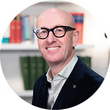- OT
- Life in practice
- Practitioner stories
- Presbyopia purpose
Presbyopia purpose
OT speaks to Dr Melissa Barnett about her working day and what inspires her

03 December 2016
What is a typical working day like for you?
I am based at the University of California, Davis, Sacramento, and my typical day involves working in the clinic, where I see a variety of patients that include a combination of specialty contact lens, regular cornea contact lens, anterior segment disease, comprehensive and urgent examinations. I also teach residents and students during this time. After clinic, I often give a continuing education lecture or work on publications in the evening.Which aspect of your current role inspires you the most?
I absolutely love being able to improve the quality of life for my patients. Scleral lenses have led to amazing life-changing experiences for my patients who are disabled without the lenses. In addition, the treatment of ocular surface disease can dramatically improve my patients’ quality of life, especially those with autoimmune conditions such as Sjögren’s disease.
Where do you see the direction of optometry heading in the next five years?
Telemedicine and advances in technology will enable the further advancement of remote eye care. This will be especially important for our ageing population and increased need for medical eye care. In addition, I see the need for increased collaboration between optometry and ophthalmology in order to advance our professions.
What do you regard as being the most influential development to impact upon the clinical role of practitioners in recent years?
The re-emergence and growth of scleral lenses have had an impact for many patient and practitioners alike. Scleral lenses not only enable us to transform our patient’s lives, but they have re-energised practitioners – even those who have practised for many years. One of my favourite things to do is to teach practitioners in a workshop or hands-on format how to fit scleral lenses. The learning curve is rapid, which is extremely rewarding.
Who and what has been most influential in steering your career path?
After optometry school I worked in private practice ophthalmology for four years. This was an amazing learning experience and guided my clinical thought process when practising. One of my mentors, Mark Andre, always believed in me and encouraged me to start lecturing and writing. My colleagues at UC Davis, optometrists and ophthalmologists have stimulated me for the last 10 years while I have worked there. I am immensely grateful to work in this amazing environment.
If you had the power to change any aspect of the current remit of optometrists what would it be?
I would like optometrists to embrace the diagnosis and treatment of ocular surface disease. Since meibomian glands play a role in maintaining ocular surface health, it is important to keep the eyelids healthy. As optometrists, we can learn from dentists: “You don’t have to clean your meibomian glands – just the ones you want to keep.
Advertisement


Comments (0)
You must be logged in to join the discussion. Log in